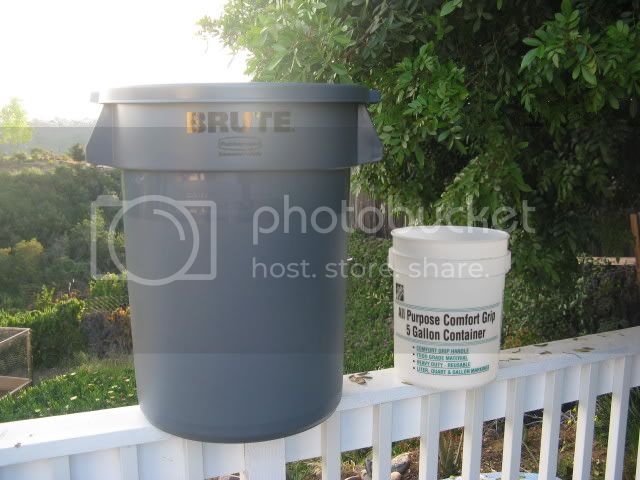I know there is a knowledgeable bunch of hydro growers around here. I am interested in your takes on what sorts of plastics are acceptable for growing edible plants and produce hydroponically.
My basic, not complete but general understanding is types 2, 4, and 5 are "food grade" approved plastics. However, I see all sorts of plastics are involved with food.
#1 PET (Polyethylene terephthalate)*: soda bottles, oven-ready meal trays and water bottles
#2 HDPE (High-density polyethylene)*: milk bottles, detergent bottles and grocery/trash/retail bags
#3 PVC (Polyvinyl chloride): plastic food wrap, loose-leaf binders and plastic pipes
#4 LDPE (Low-density polyethylene): dry cleaning bags, produce bags and squeezable bottles
#5 PP (Polypropylene): medicine bottles, aerosol caps, drinking straws and food containers (such as yogurt, ketchup bottles and sour cream/butter/hummus tubs)
#6 PS (Polystyrene): compact disc jackets, packaging Styrofoam peanuts and plastic tableware
#7 Other: reusable water bottles, certain kinds of food containers and Tupperware
Interestingly enough, most bottled water comes in type 1 bottles which carry the disclaimer of being "one use" plastics. As in don't refill/reuse most water bottles. Or what? Chemicals leeching into your water? I've noticed that most 5 gal bottled water jugs and insulated plastic coolers of all shapes and sizes are type 7, which is the sort recently linked with and in the headlines for BPA. And I've heard a lot of negative talk about vinyls and PVC lately.
I don't have an agenda other than seeing every one's general consensus on this issue, (but am usually a big believer in you get what you pay for) and I have seen it become a fairly divisive one in some circles.
The issue has come up amongst a group of hydro growers I know, most of whom do not even grow plants that are eaten, and I figure perhaps some of these concerns have basis. What's your opinion?
My basic, not complete but general understanding is types 2, 4, and 5 are "food grade" approved plastics. However, I see all sorts of plastics are involved with food.
#1 PET (Polyethylene terephthalate)*: soda bottles, oven-ready meal trays and water bottles
#2 HDPE (High-density polyethylene)*: milk bottles, detergent bottles and grocery/trash/retail bags
#3 PVC (Polyvinyl chloride): plastic food wrap, loose-leaf binders and plastic pipes
#4 LDPE (Low-density polyethylene): dry cleaning bags, produce bags and squeezable bottles
#5 PP (Polypropylene): medicine bottles, aerosol caps, drinking straws and food containers (such as yogurt, ketchup bottles and sour cream/butter/hummus tubs)
#6 PS (Polystyrene): compact disc jackets, packaging Styrofoam peanuts and plastic tableware
#7 Other: reusable water bottles, certain kinds of food containers and Tupperware
Interestingly enough, most bottled water comes in type 1 bottles which carry the disclaimer of being "one use" plastics. As in don't refill/reuse most water bottles. Or what? Chemicals leeching into your water? I've noticed that most 5 gal bottled water jugs and insulated plastic coolers of all shapes and sizes are type 7, which is the sort recently linked with and in the headlines for BPA. And I've heard a lot of negative talk about vinyls and PVC lately.
I don't have an agenda other than seeing every one's general consensus on this issue, (but am usually a big believer in you get what you pay for) and I have seen it become a fairly divisive one in some circles.
The issue has come up amongst a group of hydro growers I know, most of whom do not even grow plants that are eaten, and I figure perhaps some of these concerns have basis. What's your opinion?

